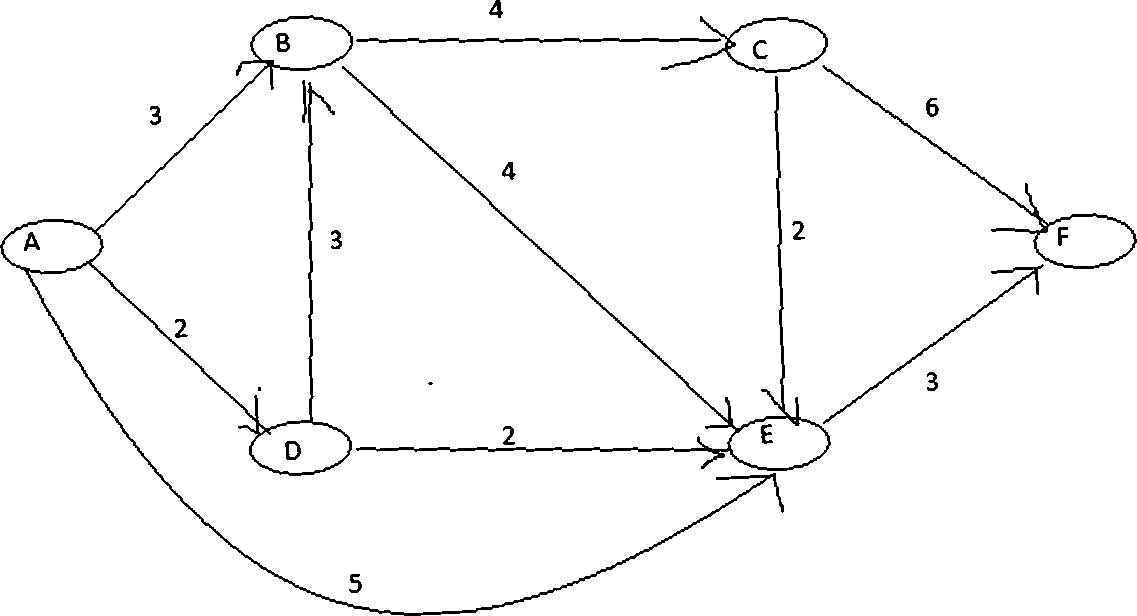Rajasthan Technical University 2011-6th Sem B.Tech Computer Science and Engineering (Main) , /e- 6CS1 Computer Networks - Question Paper
Friday, 24 May 2013 11:15Web
Page 1 of 3
B.tech. VI Semester (Main) Examination, May/June -2011
Computer Engineering
6CS1 Computer Networks
(Common to Computer Engineering & info Technology)
Unit-I
1.
A) Describe the working principles, advantage and disadvantages of the subsequent routing algorithms:
i) Distance vector routing
ii) Reverse path forwarding [Marks 5+5]
B) Consider the subsequent network in Fig(1) with the indicated link cost. Use Dijkstra's shortest path algorithm to calculate the shortest paths from A to C and F. [Marks 6]
OR
a) Answer the subsequent ques. associated with congestion algorithms:
i) Difference ranging from token bucket and leaky bucket algorithms.
ii) Describe all the parameters used in flow specification techniques.
iii) Rate based congestion algorithms. [Marks 3*4=12]
b) What do you know about choke Packets? Write processes in which we are using these packets. [Marks 4]
Unit –II
2.
a) What is virtual circuit? discuss
b) Describe the way to do reassembly of IP fragments at the destination in IP protocol.
c) Consider a point to point link two km in length, at what bandwidth would propagation delay (at speed 2*10^8 m/sec, equal transmit delay for 100 bytes packets? [Marks 4+6+6]
OR
a) What do you understand by layering and protocol? Elucidate your ans using the internet architecture.
b) State the importance of the TTL filed in the IPv4 Header. Which entity has the responsibility of updating TTL?
c) Discuss the use of sub netting to break a class C, Network into four logical networks. If the original class C address was 194.17.68, elaborate the ranges of addresses in every of the logical networks? [Marks 6+6+4]
Unit –III
3.
a) Explain the congestion control mechanism employed by TCP, discussing in detail the role of the JACOBSON's algorithm, dynamic window resizing and the slow begin mechanism.
b) Draw the formal of the UDP header and discuss in brief the different fields. [Marks 12+4]
OR
a) What do you understand by differential encoding?
b) Encode the subsequent sequence of bits using NRZ and Manchester encoding and highlight the advantage and disadvantage of every method.
1 one 0 one 0 0 0 0 one 1 one 1 0 1
c) What do you understand by classless addressing? [Marks 5+8+3]
Unit –IV
4.
a) Explain the 3 way handshake protocol and justify that it successfully handles all possible problems during connection establishment in TCP.
b) Explain with the help of a diagram operation of the flow control Mechanism in TCP.
c) Generate the CRC for the provided message M using the provided divisor P.
M=1010001101
P=110101
When would CRC fail to detect errors in a bit stream? [Marks 6+6+4]
OR
a) Discuss the possible scenario's for a transport connection over a connection oriented network layer.
b) Differentiate the Transport Bridge and source routing bridge.
c) The waveform of the subsequent figure (2) belongs to Manchester coded binary data stream. Determine the beginning and end of bit periods (i.e. extract clock information) and provide the data sequence. [Marks 4+6+6]
Unit –V
5.
a) Discuss the 2 principal kinds of queuing mechanism and compare their performances.
b) Explain various kind of services given by application layer.
c) Explain architecture of world wide web. [Marks 8+4+4]
OR
a) Explain principal DNS resource record kinds and there meanings.
b) What is the E-mail privacy? explain the E-mail security package PGP and PEM with their operations.
c) Write short note on exploiting heterogeneity. [Marks 6+6+4]

- "h'tl T-t
u
|
Attachment: |
| Earning: Approval pending. |
